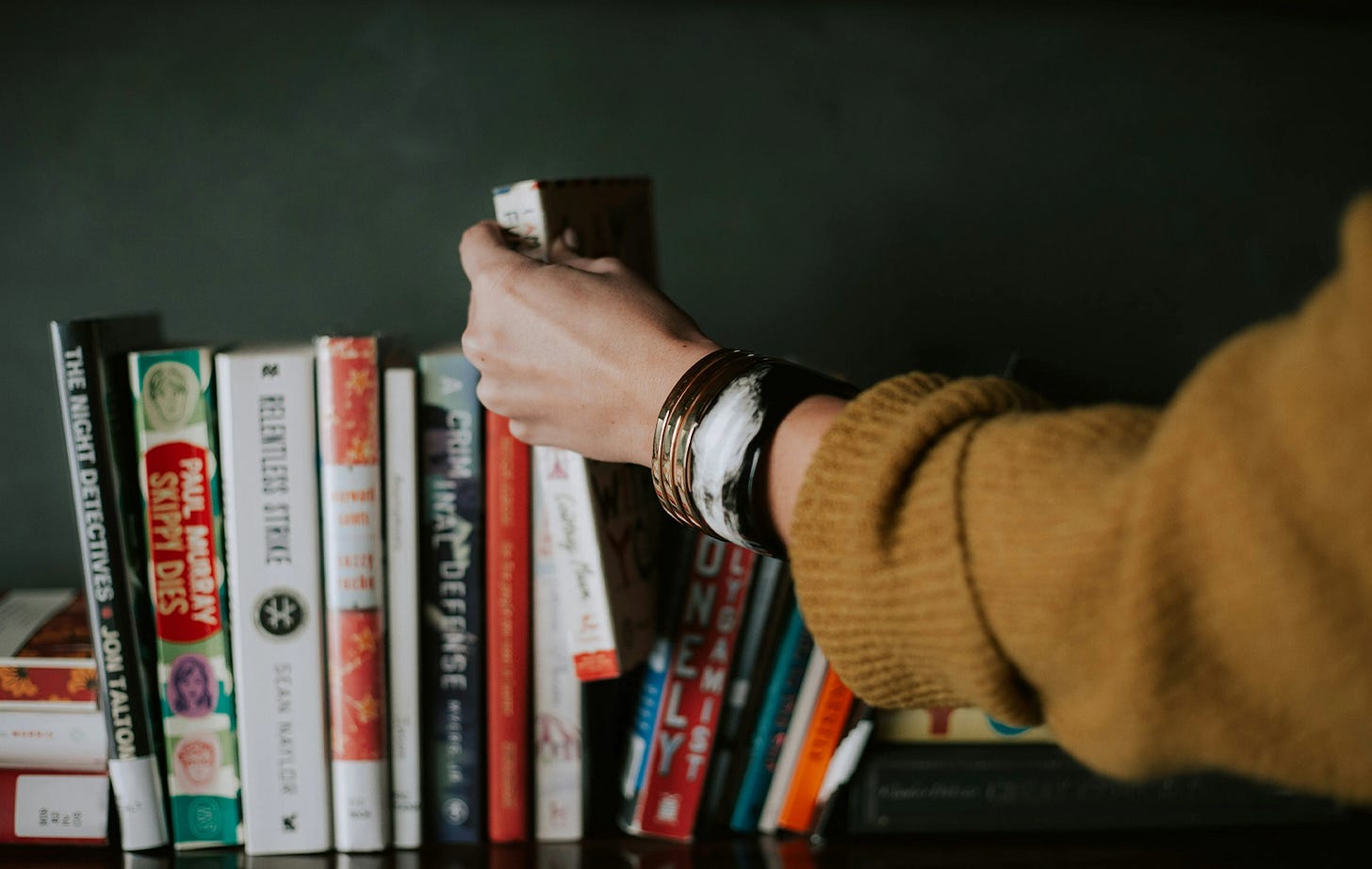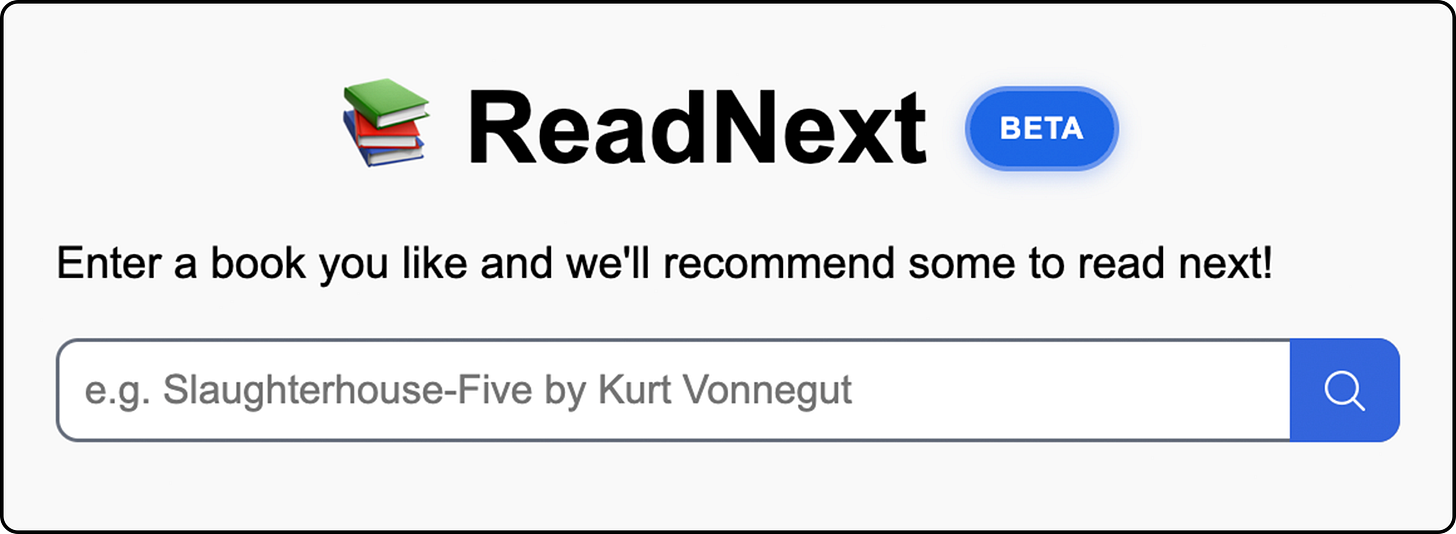How to (actually) read more
5 reading tips that actually work

Here’s all the useful advice I’ve gotten on how to read more. If you know a helpful tip that’s not in this article, please share it in the comments!
1. Track your reading
If you have a record of how much you’ve read in the past, you’ll be more confident in your identity as a reader and more motivated to read going forward.
There’s a bunch of different ways to track your reading. Find one that works the best for you.
Lots of people track the number of books they’ve read using tools like Goodreads and StoryGraph. I highly recommend making an account with one of those sites, since it’ll be useful (though not required) for another tip later on in this article.
With sites like those, you can keep track of all the books you’ve read and see metrics like number of pages read per month, number of books read per genre, etc.
Another, simpler way is to track your time spent reading per day in a note-taking app. The next time you sit down to read, start the stopwatch on your phone and track how long you read that day. When you’re done, open the notes app and type out this line:
[Date] = [Time] (Book)
Here’s an example:
7/23/25 = 32:54 (The Alchemist)
Now, the next time you open that note, you’ll see you read The Alchemist for 32 minutes and 54 seconds on July 22nd, 2025.
As you continue tracking your time spent reading, the note will grow longer and you’ll have more visual proof that reinforces your identity as a reader.
Side note: In Atomic Habits, James Clear wrote about the importance of building an identity around the habits you want to form. The logic is simple, but powerful. If you see yourself as a reader, you will read more.
If you want to get fancy with it, you can log your reading time in Excel and have it automatically compute things like total reading time, average time spent reading per day, and average days read per week.
Bottom line: looking at the list of books you’ve read, or the time you’ve spent reading, is psychologically motivating. It helps you see yourself as someone who reads a lot, which in turn will get you to read a lot.
2. Read two books at a time
If you ever put off reading because you don’t feel like delving into the specific book you’re on, try reading two books at a time instead.
I’d recommend one fiction book and one non-fiction book.
That way, if you get bored with the fiction book, you can switch to the non-fiction book and vice versa.
This method means that either way, you’ll be making progress and will continue to read.
Other book combinations could include:
1 fiction, 1 fantasy
1 self-help, 1 biography
1 novel, 1 short story collection
3. Set a minimum daily reading goal
If you want to read more, you’ll have to make it a habit.
And the most important part of creating a habit is consistency.
You need to be consistent.
In fact, when it comes to building a reading habit, the number of days you read in a week is more important than the amount you read.
The guy who reads for 15 minutes a day no matter what will always beat the guy who reads for hours a day, but only does so when he really feels like it.
Those 15 minutes stack up, and the consistency makes sure your reading muscle doesn’t atrophy.
If you’re struggling with consistency, try setting a minimum daily reading goal and make it real low. Like 1 minute low. Or even 1 sentence low.
The point is to make it so easy that you have no excuse not to do it.
If you hit that minimum goal for the day and really don’t feel like going past it, that’s fine. You hit your goal. You’ve added another day of being a consistent reader.
Oftentimes the hardest part about building a reading habit is actually picking up the book and starting.
And you’re not picking up the book because you’re anticipating the huge investment of time and work it takes to read it. Well, if you have a minimum goal, you’re much more likely to pick up that book because you know that there’s no requirement or expectation to read for like an hour or two right then and there.
4. Make a to-read list
If you have a list of books you want to read, you’ll always have a selection to choose from once you finish a book.
If you wait until after you’ve finished a book to find the next one, you’ll have a period of time where you’re reading nothing. And that period could last for a few days, or a week, or longer.
Instead, it’s a good idea to have your next book ready for when you finish your current one.
You can do this by making a list of to-read books.
Goodreads and StoryGraph both have features that let you make a to-read list (or “shelf”). You can also just write the list down on a note on your phone!
As for finding which books to add, here’s a few good methods:
If you input all the books you’ve read into Goodreads or StoryGraph, they’ll give you recommendations based on your tastes. The initial setup can be a bit time-consuming (since you need to manually add each book and give it a rating), but once you’ve added them, you’re good to go and will get some good book recommendations.
If you want a simpler option (or just a second opinion), I built a book recommendation site called ReadNext where you enter a book you liked and it gives you personalized recommendations for what to read next.

I recommend splitting up your to-read list into categories so you can easily pick a book you’re in the mood for.
If you’re using Goodreads, you can make separate shelves for each category. For example:
To-read | Science fiction
To-read | Biographies
To-read | Adventure
If you’re making your list in a notes app, it might look something like this:
Listing the books in order of length can also be helpful, since sometimes you’ll be in the mood for a shorter book and sometimes a longer book.
5. Bring a book with you wherever you go
I got this tip from Ryan Holiday and it’s surprising how useful it turned out to be.
You should always have a book on you. Whether it’s a paperback, a kindle, even a pdf on your phone, make sure you’ve always got access to a book.
Whenever you find yourself somewhere with nothing to do, (just think of all the time you spend waiting for something), pull out the book and read.
You can take this a step further and read while you eat breakfast, or listen to an audiobook in the car on your way to work. The point is, you can find empty time to fill with reading books.
To recap:
Track your reading
Read two books at a time
Set a minimum daily reading goal
Make a to-read list
Bring a book with you wherever you go

